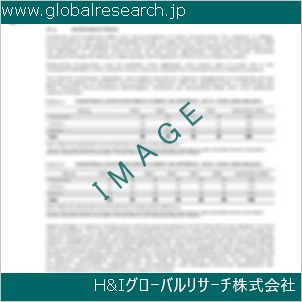Table of Contents
1 Industry Overview of Allylamine
1.1 Definition and Specifications of Allylamine
1.1.1 Definition of Allylamine
1.1.2 Specifications of Allylamine
1.2 Classification of Allylamine
1.3 Applications of Allylamine
1.3.1 Nuclear Application
1.3.2 Non-Nuclear Application
1.4 Industry Chain Structure of Allylamine
1.5 Industry Overview and Major Regions Status of Allylamine
1.5.1 Industry Overview of Allylamine
1.5.2 Global Major Regions Status of Allylamine
1.6 Industry Policy Analysis of Allylamine
1.7 Industry News Analysis of Allylamine
2 Manufacturing Cost Structure Analysis of Allylamine
2.1 Raw Material Suppliers and Price Analysis of Allylamine
2.2 Equipment Suppliers and Price Analysis of Allylamine
2.3 Labor Cost Analysis of Allylamine
2.4 Other Costs Analysis of Allylamine
2.5 Manufacturing Cost Structure Analysis of Allylamine
2.6 Manufacturing Process Analysis of Allylamine
3 Technical Data and Manufacturing Plants Analysis of Allylamine
3.1 Capacity and Commercial Production Date of Global Allylamine Major Manufacturers in 2023
3.2 Manufacturing Plants Distribution of Global Allylamine Major Manufacturers in 2023
3.3 R&D Status and Technology Source of Global Allylamine Major Manufacturers in 2023
3.4 Raw Materials Sources Analysis of Global Allylamine Major Manufacturers in 2023
4 Capacity, Production and Revenue Analysis of Allylamine by Regions, Types and Manufacturers
4.1 Global Capacity, Production and Revenue of Allylamine by Regions 2019-2024
4.2 Global and Major Regions Capacity, Production, Revenue and Growth Rate of Allylamine 2019-2024
4.3 Global Capacity, Production and Revenue of Allylamine by Types 2019-2024
4.4 Global Capacity, Production and Revenue of Allylamine by Manufacturers 2019-2024
5 Price, Cost, Gross and Gross Margin Analysis of Allylamine by Regions, Types and Manufacturers
5.1 Price, Cost, Gross and Gross Margin Analysis of Allylamine by Regions 2019-2024
5.2 Price, Cost, Gross and Gross Margin Analysis of Allylamine by Types 2019-2024
5.3 Price, Cost, Gross and Gross Margin Analysis of Allylamine by Manufacturers 2019-2024
6 Consumption Volume, Consumption Value and Sale Price Analysis of Allylamine by Regions, Types and Applications
6.1 Global Consumption Volume and Consumption Value of Allylamine by Regions 2019-2024
6.2 Global and Major Regions Consumption Volume, Consumption Value and Growth Rate of Allylamine 2019-2024
6.3 Global Consumption Volume and Consumption Value of Allylamine by Types 2019-2024
6.4 Global Consumption Volume and Consumption Value of Allylamine by Applications 2019-2024
6.5 Sale Price of Allylamine by Regions 2019-2024
6.6 Sale Price of Allylamine by Types 2019-2024
6.7 Sale Price of Allylamine by Applications 2019-2024
6.8 Market Share Analysis of Allylamine by Different Sale Price Levels
7 Supply, Import, Export and Consumption Analysis of Allylamine
7.1 Supply, Consumption and Gap of Allylamine 2019-2024
7.2 Global Capacity, Production, Price, Cost, Revenue, Supply, Import, Export and Consumption of Allylamine 2019-2024
7.3 USA Capacity, Production, Price, Cost, Revenue, Supply, Import, Export and Consumption of Allylamine 2019-2024
7.4 EU Capacity, Production, Price, Cost, Revenue, Supply, Import, Export and Consumption of Allylamine 2019-2024
7.5 China Capacity, Production, Price, Cost, Revenue, Supply, Import, Export and Consumption of Allylamine 2019-2024
7.6 Japan Capacity, Production, Price, Cost, Revenue, Supply, Import, Export and Consumption of Allylamine 2019-2024
8 Major Manufacturers Analysis of Allylamine
8.1 Manufacturer One
8.1.1 Company Profile
8.1.2 Product Picture and Specifications
8.1.2.1 Type I
8.1.2.2 Type II
8.1.2.3 Type III
8.1.3 Capacity, Production, Price, Cost, Gross and Revenue
8.1.4 Contact Information
8.2 Manufacturer Two
8.2.1 Company Profile
8.2.2 Product Picture and Specifications
8.2.2.1 Type I
8.2.2.2 Type II
8.2.2.3 Type III
8.2.3 Capacity, Production, Price, Cost, Gross and Revenue
8.2.4 Contact Information
8.3 Manufacturer Three
8.3.1 Company Profile
8.3.2 Product Picture and Specifications
8.3.2.1 Type I
8.3.2.2 Type II
8.3.2.3 Type III
8.3.3 Capacity, Production, Price, Cost, Gross and Revenue
8.3.4 Contact Information
8.4 Manufacturer Four
8.4.1 Company Profile
8.4.2 Product Picture and Specifications
8.4.2.1 Type I
8.4.2.2 Type II
8.4.2.3 Type III
8.4.3 Capacity, Production, Price, Cost, Gross and Revenue
8.4.4 Contact Information
8.5 Manufacturer Five
8.5.1 Company Profile
8.5.2 Product Picture and Specifications
8.5.2.1 Type I
8.5.2.2 Type II
8.5.2.3 Type III
8.5.3 Capacity, Production, Price, Cost, Gross and Revenue
8.5.4 Contact Information
…
9 Marketing Trader or Distributor Analysis of Allylamine
9.1 Marketing Channels Status of Allylamine
9.2 Traders or Distributors with Contact Information of Allylamine by Regions
9.3 Ex-work Price, Channel Price and End Buyer Price Analysis of Allylamine
9.4 Regional Import, Export and Trade Analysis of Allylamine
10 Industry Chain Analysis of Allylamine
10.1 Upstream Major Raw Materials Suppliers Analysis of Allylamine
10.1.1 Major Raw Materials Suppliers with Contact Information Analysis of Allylamine
10.1.2 Major Raw Materials Suppliers with Supply Volume Analysis of Allylamine by Regions
10.2 Upstream Major Equipment Suppliers Analysis of Allylamine
10.2.1 Major Equipment Suppliers with Contact Information Analysis of Allylamine
10.2.2 Major Equipment Suppliers with Product Pictures Analysis of Allylamine by Regions
10.3 Downstream Major Consumers Analysis of Allylamine
10.3.1 Major Consumers with Contact Information Analysis of Allylamine
10.3.2 Major Consumers with Consumption Volume Analysis of Allylamine by Regions
10.4 Supply Chain Relationship Analysis of Allylamine
11 Development Trend of Analysis of Allylamine
11.1 Capacity, Production and Revenue Forecast of Allylamine by Regions and Types
11.1.1 Global Capacity, Production and Revenue of Allylamine by Regions 2024-2029
11.1.2 Global and Major Regions Capacity, Production, Revenue and Growth Rate of Allylamine 2024-2029
11.1.3 Global Capacity, Production and Revenue of Allylamine by Types 2024-2029
11.2 Consumption Volume and Consumption Value Forecast of Allylamine by Regions, Types and Applications
11.2.1 Global Consumption Volume and Consumption Value of Allylamine by Regions 2024-2029
11.2.2 Global and Major Regions Consumption Volume, Consumption Value and Growth Rate of Allylamine 2024-2029
11.2.3 Global Consumption Volume and Consumption Value of Allylamine by Types 2024-2029
11.2.4 Global Consumption Volume and Consumption Value of Allylamine by Applications 2024-2029
11.3 Supply, Import, Export and Consumption Forecast of Allylamine
11.3.1 Supply, Consumption and Gap of Allylamine 2024-2029
11.3.2 Global Capacity, Production, Price, Cost, Revenue, Supply, Import, Export and Consumption of Allylamine 2024-2029
11.3.3 USA Capacity, Production, Price, Cost, Revenue, Supply, Import, Export and Consumption of Allylamine 2024-2029
11.3.4 EU Capacity, Production, Price, Cost, Revenue, Supply, Import, Export and Consumption of Allylamine 2024-2029
11.3.5 China Capacity, Production, Price, Cost, Revenue, Supply, Import, Export and Consumption of Allylamine 2024-2029
11.3.6 Japan Capacity, Production, Price, Cost, Revenue, Supply, Import, Export and Consumption of Allylamine 2024-2029
12 New Project Investment Feasibility Analysis of Allylamine
12.1 New Project SWOT Analysis of Allylamine
12.2 New Project Investment Feasibility Analysis of Allylamine
13 Conclusion of the Global Allylamine (CAS 107-11-9) Industry 2024 Market Research Report
| ※参考情報 アリルアミン(Allylamine)は、化学式 C3H7Nを持つ有機化合物で、CAS番号は107-11-9です。アリルアミンは一級アミンに分類され、構造的には、プロペンの骨格にアミン基(-NH2)が結合している形状をしています。この化合物は、さまざまな化学合成や製造において重要な役割を果たすため、広く利用されています。 アリルアミンの主な特徴は、その反応性と多様な化学的性質です。アミン類として、アリルアミンは核酸やアミノ酸の合成において重要な中間体となります。また、一般的にロジスティックな条件下で容易に反応するため、多くの化学反応に利用されています。例えば、アリルアミンは、アリル基を持つ多くの化合物と同様に、求電子剤と反応して様々な反応生成物を形成することができます。 アリルアミンは、特に医薬品や農薬の合成において重要な原料です。医薬品の分野では、アリルアミンを基にした化合物が、抗生物質や抗ガン剤などの有効成分として利用されることがあります。また、農薬や除草剤の合成にも利用され、作物の生育を助けるために重要な役割を果たしています。 さらに、アリルアミンは、プラスチックや合成繊維の製造においても使用されます。特に、ポリエステル樹脂やウレタン樹脂の合成において、アリルアミンは硬化剤や触媒として機能します。そのため、工業的な用途としては非常に広範囲にわたります。 アリルアミンの他の用途には、接着剤や塗料の添加剤、防腐剤、化粧品成分などもあります。これらの用途では、アリルアミンの特性を活かして製品の性能を向上させる目的で使用されます。たとえば、接着剤においては、アリルアミンを添加することで、硬化時間を短縮し、最終的な接着強度を向上させることが可能になります。 アリルアミンに関連する技術としては、化学合成のための触媒技術や、精製技術が挙げられます。これらの技術は、高純度のアリルアミンを製造するために重要です。特に、触媒技術においては、アリルアミンの合成の効率を高めるために様々な反応条件や触媒の最適化が行われています。 また、環境への配慮から、アリルアミンの製造過程では、廃棄物管理や副生成物の処理が重要な課題となっています。このため、環境に優しい合成方法の開発が進められており、持続可能な化学プロセスの一環として注目されています。 総じて、アリルアミンはその多様な用途と特性から、研究開発や産業で重要な役割を果たしている化合物といえます。医薬品、農薬、工業材料など、さまざまな分野での利用が進む中、今後もアリルアミンに関する新しい知見や技術が登場することが期待されます。 |
❖ 免責事項 ❖
http://www.globalresearch.jp/disclaimer

-gr.jpg)










